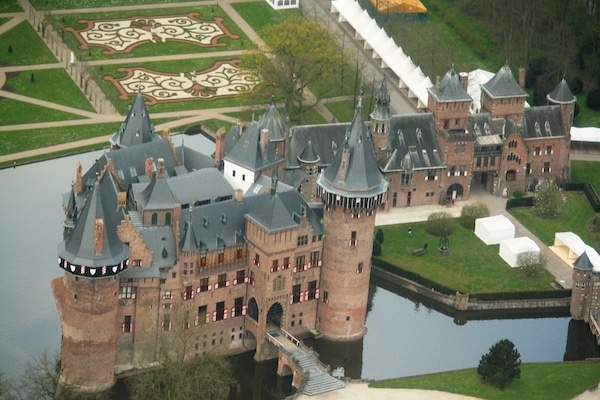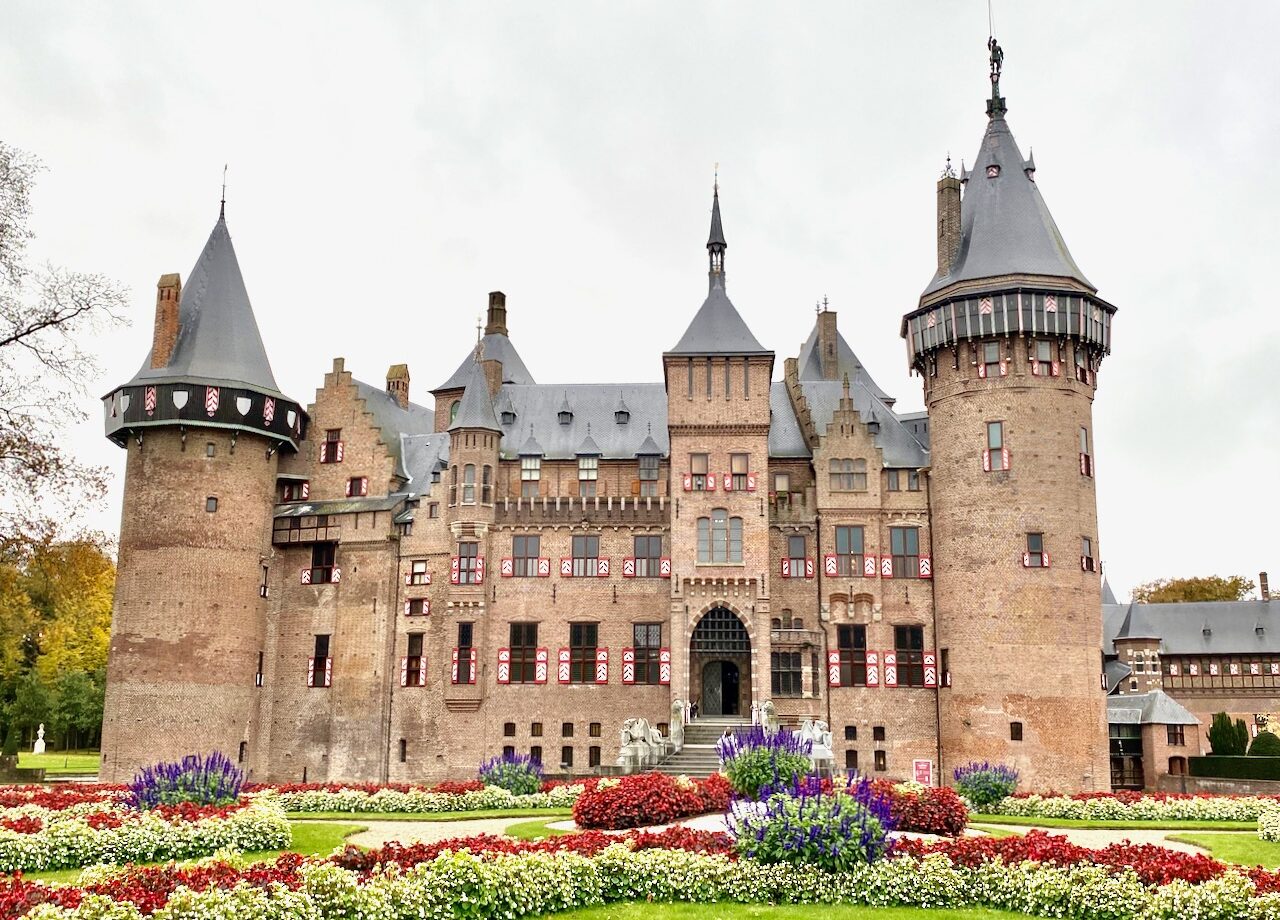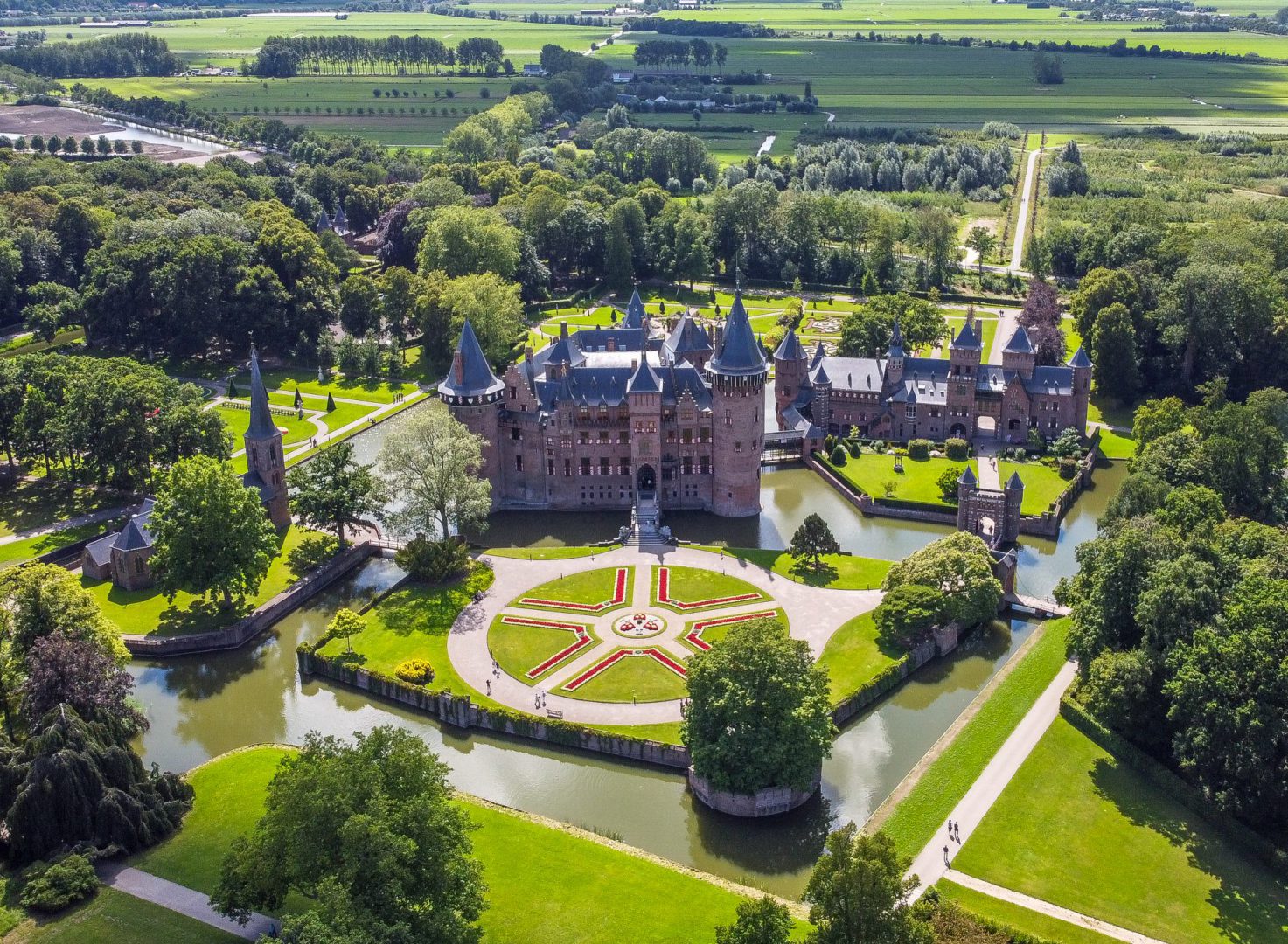De Haar Castle (Dutch: Kasteel de Haar) stands as a monumental symbol of Dutch heritage, located just outside Utrecht in the Netherlands. Known as the largest castle in the country, De Haar has a fascinating history that intertwines with some of Europe’s most prominent families, including the De Haar and Van Zuylen families, as well as the illustrious Rothschilds.

The Origins: A Fortress with Deep Roots
The earliest historical records of a structure at the site of De Haar Castle date back to 1391. At that time, the De Haar family was granted the castle and its surrounding lands as a fiefdom by Hendrik van Woerden. For nearly half a century, the De Haar family maintained ownership of the castle until the last male heir passed away in 1440 without descendants. The castle then passed into the hands of the Van Zuylen family, marking the beginning of a new chapter in its history.
The castle faced numerous challenges throughout its early years, most notably in 1482 when it was burned down, and its walls were destroyed during a turbulent period in the region’s history. However, parts of the castle that did not have a military function survived and were likely incorporated into the structure when it was rebuilt in the early 16th century. The first documented mention of the restored castle appears in 1506, and by 1554, records show that it had been largely reconstructed, as depicted in the oldest surviving image of the castle.

A New Beginning: The 1892 Restoration
The castle’s revival began in 1801, when Anton-Martinus van Zuylen van Nijevelt, the last Catholic member of the Van Zuylen family in the Netherlands, bequeathed the property to his cousin, Jean-Jacques van Zuylen van Nyevelt, from the Catholic branch of the family in the Southern Netherlands.
However, it wasn’t until 1887 that the castle’s true transformation began. Jean-Jacques’ grandson, Etienne Gustave Frédéric Baron van Zuylen van Nyevelt van de Haar, married Baroness Hélène de Rothschild, a member of the wealthy and influential Rothschild family. When Etienne inherited the castle in 1890, he and Hélène embarked on an ambitious restoration project, fully funded by the Rothschilds. They enlisted the renowned Dutch architect Pierre Cuypers, famous for his work on the Rijksmuseum and Amsterdam Central Station, to lead the reconstruction.
Cuypers worked on De Haar Castle for two decades, from 1892 to 1912, meticulously restoring and expanding the structure. The result was a breathtaking blend of medieval and neo-Gothic architecture, complete with 200 rooms and 30 bathrooms, though only a select few on the ground and first floors are open to the public.

Modern Marvels in a Historic Setting
Cuypers was ahead of his time, equipping the castle with state-of-the-art amenities for the late 19th century. De Haar Castle boasted modern conveniences such as electrical lighting powered by its own generator and central heating via steam, earning recognition as an industrial monument. The kitchen, another marvel of modernity, still features its original copper pots and pans—the largest extant set in the Netherlands—and a massive six-meter-long furnace that was heated with peat or coal. The kitchen’s tiles, adorned with the coats of arms of the De Haar and Van Zuylen families, were specially baked in Franeker.
The castle’s interior is a testament to Cuypers’ architectural genius, with extensive use of cast iron and other materials that emphasized the contrast between the original and newly constructed sections. Symbolism is woven throughout the castle’s design, with numerous references to the Rothschild family, such as the Stars of David on the balconies of the knight’s hall and the family coat of arms prominently displayed on the hearth in the library. The Van Zuylen family’s presence is also felt, with their motto, A majoribus et virtute (“From our forebears and by virtue”), inscribed on the hearth in the knight’s hall.

A Legacy Preserved
De Haar Castle stands today not only as a monument to Dutch nobility and architectural brilliance but also as a reminder of the resilience and enduring legacy of the families who shaped its history. Visitors to the castle can explore its grand halls, intricate details, and lush surrounding gardens, all while immersing themselves in the stories of the people who called De Haar home.


